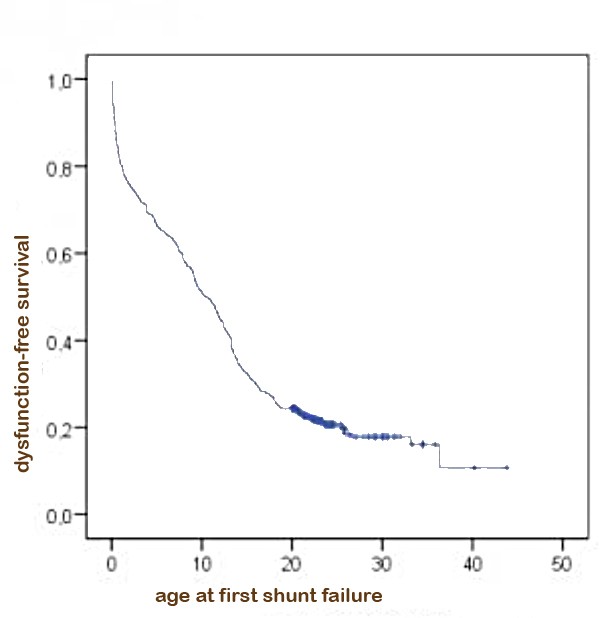
Contents
- 1 What Is the Survival Rate of Hydrocephalus?
- 1.0.1 How long can you live with hydrocephalus?
- 1.0.2 What is hydrocephalus?
- 1.0.3 What are the types of hydrocephalus?
- 1.0.4 What causes hydrocephalus?
- 1.0.5 What are the symptoms of hydrocephalus?
- 1.0.6 How is hydrocephalus diagnosed?
- 1.0.7 How is hydrocephalus treated?
- 1.0.8 When to see a doctor for hydrocephalus
What Is the Survival Rate of Hydrocephalus?
The survival rate of patients with hydrocephalus depends on the following:
- Their symptoms
- Timeliness of diagnosis
- Their reaction to the treatment
Survival in untreated hydrocephalus is poor. Approximately 50% of affected patients die before 3 years of age and about 80% die before reaching adulthood. Treatment markedly improves the outcome for hydrocephalus not associated with tumors, with 89% and 95% survival in two case studies.
How long can you live with hydrocephalus?
Early diagnosis and treatment of hydrocephalus can improve the survival rate of patients. Most hydrocephalus patients lead long, problem-free lives. However, if left untreated, hydrocephalus may prove fatal. The longer the symptoms persist, the more difficult it becomes to treat. Surgery, rehabilitative therapies, and educational interventions can help many patients live normal lives.
If hydrocephalus treatment involves implementing a shunt system, the survival rate depends on the body’s acceptance of the shunt system. The main complications of shunt systems include:
- Blockage due to tissue, blood or protein, cells, and debris may block any part of the shunt system
- Disconnection as shunt drifts within the body
- Infection due to the invasion of bacteria during the surgery
- Hemorrhage
- Seizures
- Fits
- Epilepsy
What is hydrocephalus?
Hydrocephalus is a condition in which there is an abnormal buildup of cerebrospinal fluid (CSF) in the cavities deep within the brain. The extra fluids cause the cavities to swell, exerting pressure on the adjacent brain tissues. CSF is a colorless fluid surrounding the brain and spinal cord. CSF constantly circulates within the ventricles of the brain and serves many crucial functions, including:
- Protects and cushions the brain and spine
- Acts as a shock absorber
- Transports essential nutrients to the brain and spinal cord
- Regulates changes in pressure within the brain
On average, the body produces one pint of CSF and absorbs it completely; however, a hindrance to the normal flow of CSF and its absorption can result in a buildup of CSF. The extra pressure generated can hinder proper brain function, leading to brain damage and even death.
What are the types of hydrocephalus?
Depending on the onset, the presence of structural defects, or the amount of cerebrospinal fluid (CSF) pressure, hydrocephalus can be divided into six categories.
- Acquired hydrocephalus: Develops at birth or in adulthood and is caused by injury or disease.
- Congenital hydrocephalus: Present at birth and could be caused by events during fetal development or genetic abnormalities.
- Communicating hydrocephalus: Occurs when there is no obstruction to the flow of CSF within the ventricular system and is caused by inadequate absorption or an abnormal increase in the quantity of CSF produced.
- Non-communication (obstructive) hydrocephalus: The flow of CSF is blocked in one or more of the passages connecting the ventricles, causing enlargement of the pathways and an increase in pressure within the skull.
- Normal pressure hydrocephalus: Most common in older individuals and characterized by dilated ventricles with normal pressure within the spinal column.
- Hydrocephalus ex-vacuo: Usually affects adults and occurs due to degenerative diseases (Alzheimer’s disease), stroke, or trauma that damages and shrinks brain tissue.
QUESTION
What causes hydrocephalus?
With hydrocephalus, cerebrospinal fluid (CSF) accumulates around the brain, creating harmful pressure on brain tissues confined within the skull. This may occur due to:
- Increase in the production of the fluid
- Decrease in its absorption rate
- Any condition that blocks its normal flow through the ventricular system
This accumulation of CSF can be either congenital or acquired:
Congenital hydrocephalus
- Spina bifida
- Encephalocele
- Neural tube defects
- Aqueductal stenosis (narrowing of the passage between the third and fourth ventricles of the brain)
- Complications of premature birth
- Infections during pregnancy (rubella)
Acquired hydrocephalus
- Head trauma or injury
- Stroke
- Brain or spinal cord tumors
- Hemorrhage
- Meningitis
- Infections affecting the brain or spinal cord
What are the symptoms of hydrocephalus?
The symptoms of hydrocephalus differ from person to person and mainly depend on age. Hydrocephalus commonly affects infants and people above the age of 60.
Symptoms in infants
- An abnormally large head
- Rapidly increasing head circumference
- A lump on the fontanel (soft spot) on top of the head
- Prominent scalp veins
- Eyes that are fixed downward (sunset sign)
- Problems sucking or feeding
- Vomiting
- Sleepiness
- Irritability
- Seizures
Symptoms in older children and young adults
- Slow developmental progress
- Headache
- Hazy or double vision
- Nausea or vomiting
- Papilledema (swelling of the optic disc)
- Blurred or double vision
- Problems with balance or gait
- Poor coordination
- Inability to concentrate
- Sleepiness
- Difficulty remaining awake or waking up
- Poor appetite
- Urinary incontinence
- Personality changes
Symptoms in older adults
- Headache
- Nausea
- Vomiting
- Difficulty walking or gait disturbances
- Loss of balance or coordination
- Lethargy
- Loss of bladder control
- Impaired vision
- Impaired cognitive skills
- Memory loss
- Mild dementia
How is hydrocephalus diagnosed?
Apart from a thorough clinical evaluation, including detailed medical history analysis and physical examination, your doctor may recommend certain tests to confirm a diagnosis and assess treatment options:
- Neurological examination: To assess muscle strength/reflexes, coordination/balance, vision/eye movement/hearing, and mental functioning/mood
How is hydrocephalus treated?
Currently, there is no permanent cure for hydrocephalus, but prompt diagnosis and appropriate treatment could help improve the condition.
Based on the underlying causative factor, the condition may be treated in various ways, such as by directly removing the cause of cerebrospinal fluid (CSF) obstruction or indirectly diverting the excess fluid.
Shunt implantation
- This is the most common treatment for hydrocephalus.
- Excess CSF from a ventricle in the brain is drained to another body cavity, such as the peritoneal cavity (the area surrounding the abdominal organs), using a flexible tube inserted under the skin along with a catheter and a valve.
- The shunt system typically remains in place for the person’s entire life.
- The shunt system continuously diverts the CSF away from the brain, keeping the intracranial pressure within normal limits.
Endoscopic third ventriculostomy
- A new pathway for the flow of CSF is created by using a tiny camera (endoscope) with fiber optics to visualize the ventricles.
- This procedure is usually performed in children older than 2 years.
When to see a doctor for hydrocephalus
Because hydrocephalus is an ongoing condition, long-term follow-up is often required. Follow-up diagnostic tests, including CT scans, MRIs, and X-rays, help assess whether the shunt is functioning properly.
You should seek immediate medical help if experiencing any of the following postoperative symptoms:
- Redness, tenderness, pain, or swelling of the skin along the incision site or the length of the tube
- Irritability or drowsiness
- Nausea or vomiting
- Severe headache
- Double vision
- Fever
- Seizures
- Abdominal pain
- Relapse of preoperative neurological symptoms
By clicking Submit, I agree to the MedicineNet’s Terms & Conditions & Privacy Policy and understand that I may opt out of MedicineNet’s subscriptions at any time.
By clicking Submit, I agree to the MedicineNet’s Terms & Conditions & Privacy Policy and understand that I may opt out of MedicineNet’s subscriptions at any time.


